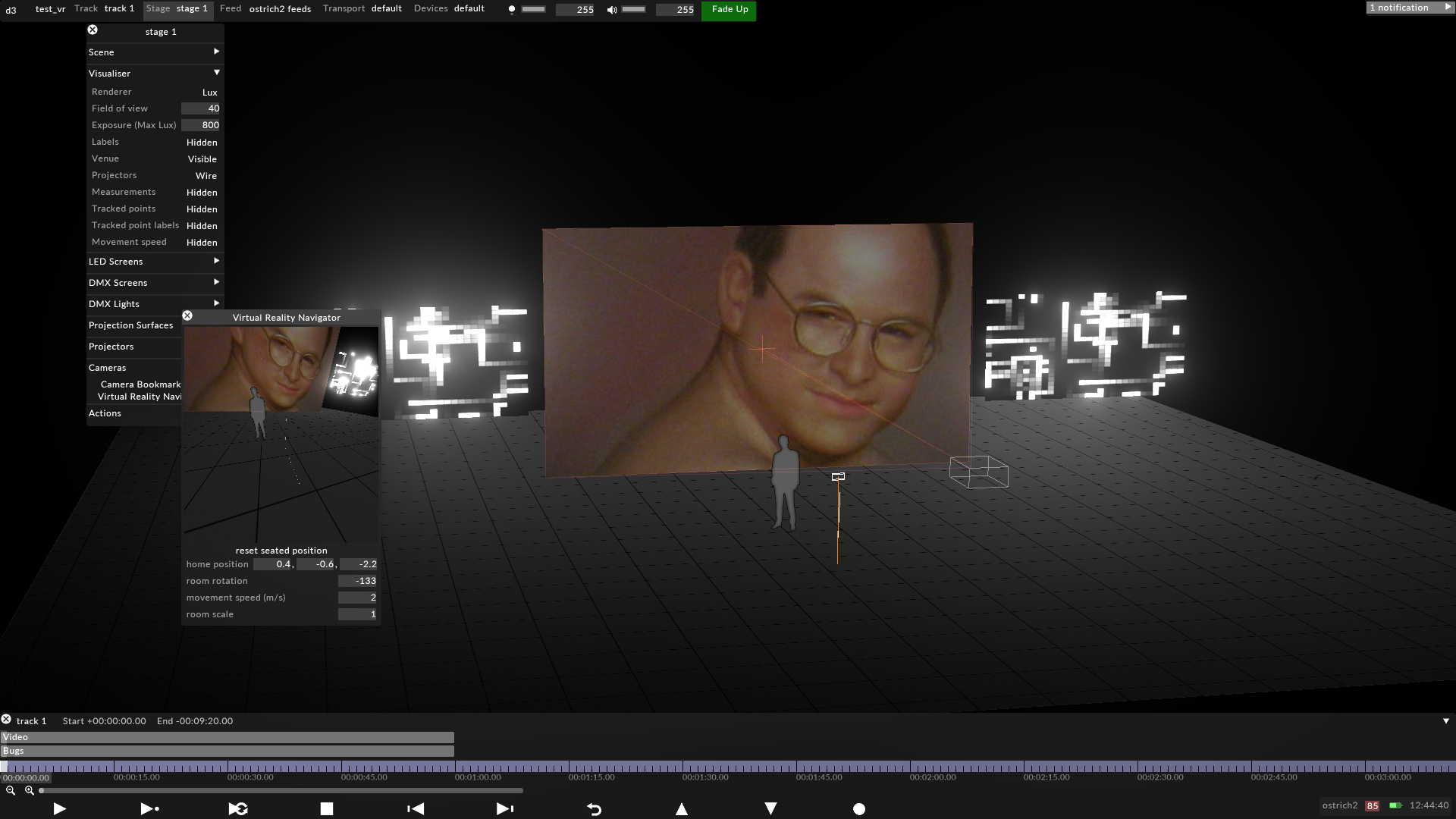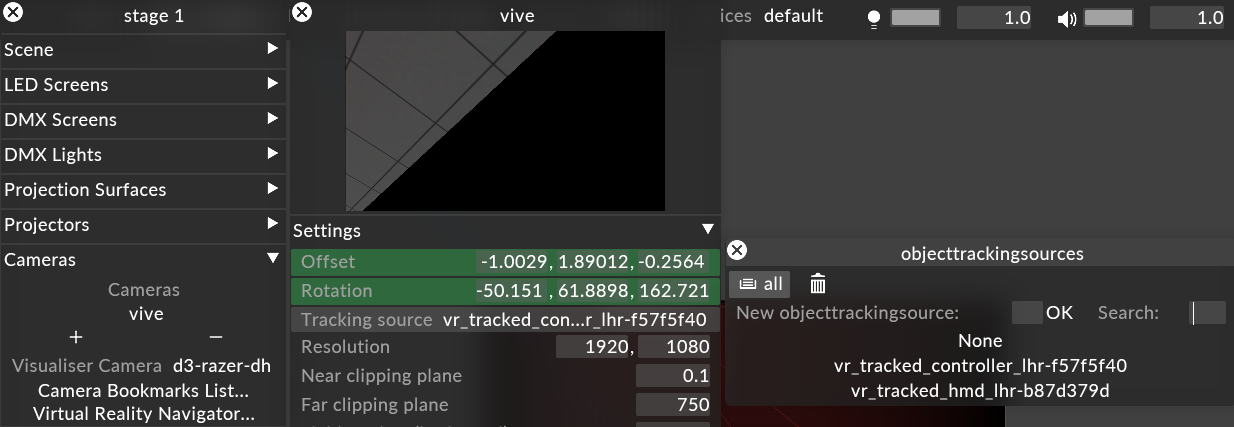VR
Virtual Reality visualiser is an OpenVR / Steam compatible visualiser mode allowing the user to enter and navigate through the scene.
VR was designed to primarily work with Designer machines, utilising GPU's such as GTX 1060 & higher (or other manufacturer equivalent).
As such, gx range machines are well suited for VR work. However, Pro & Plus ranges are not recommended for VR usage as they are not as well suited to the feature as newer machines. However VR does also work on these machines, but performance may vary.
We have tested HTC Vive and Oculus headsets on Disguise software and they are known to work. However, there are some known issues.
HTC Vive
-
The machine needs to be restarted after first installation, otherwise the headset will not be detected
-
All EDID’s need to be de-emulated otherwise the headset will not work
-
The box needs to be plugged into a USB 3 port.
Please note: Modern rendering modes such as
So far there is no plan to add more UI functionality; it’s just for viewing and walking around.
You need to have the Steam system running; you should be able to get to the point where the headset and one controller are reporting green and working, and the headset should show the Steam basic scene. Once that’s working, if steam is installed, and the VR equipment is connected - when starting a Disguise project, you will automatically be placed into VR mode.
-
The visualiser shows you the position and orientation of the headset in stage space (small white cuboid about the same size as a headset, with an orange line down to the floor). It also shows you where the controller is pointing (white line when it hits the floor level, blue line otherwise).
-
Navigation - the VR user navigates by pointing the controller at the floor location they want to go to; it goes white; they click the button and they jump there. The property movement speed in the VR Navigator window can be set to zero (jump immediately) or some non-zero number, which moves the VR world in a straight line on a linear path. This gives you a little ‘jerk’ at start and end but doesn’t seem to result in nausea. It’s less confusing for new users, but may be annoying for experienced users.
The Virtual reality navigator also lets you set up the position and orientation of the scene relative to the physical world. The VR experience keeps this orientation constant to avoid users getting lost. They still get lost of course, and when they do you can hit the reset button to bring them back to the center.
Open the stage editor by right clicking Stage from the dashboard or by right clicking the floor in the visualiser.
Select the Cameras tab
Left click Virtual reality navigator and then you can see what the VR user sees.
Warning: Navigation is restricted to floor level. We need to be able to move to the nearest horizontal surface on whatever venue / stage you’re on.
Warning: There’s no ‘reverse’ button; the workaround is just to point behind you and hit the button.
The image shows the basic elements of VR functionality.

As of r17.2, virtual cameras can now be tracked by the headset or controller of the HTC Vive
To assign HTC Vive as tracking source for a virtual camera:
-
Connect your HTC Vive to your machine and ensure the device is working in SteamVR.
-
Launch your disguise project version r17.2 or later.
-
Create a new virtual camera in your project file by right clicking on the Stage menu.
-
Hit the + icon under the Cameras tab and input the name and specifications of your camera.
-
Open the camera's menu by right clicking on its name from the Stage menu, or on the icon of the object in the visualiser.
-
Under the first tab called Settings, right click on the Tracking source field.
-
The Vive's headset and any active controllers will be listed here; left clicking on one will assign the position of the camera to it.
-
The Offset and Rotation fields of the virtual camera's menu will turn green when receiving a working signal.

Please note: Any headset that supports Steam Open VR can be used with disguise. Please check the manufacturer's specifications of the headset type you would like to use to confirm if it supports Steam Open VR.